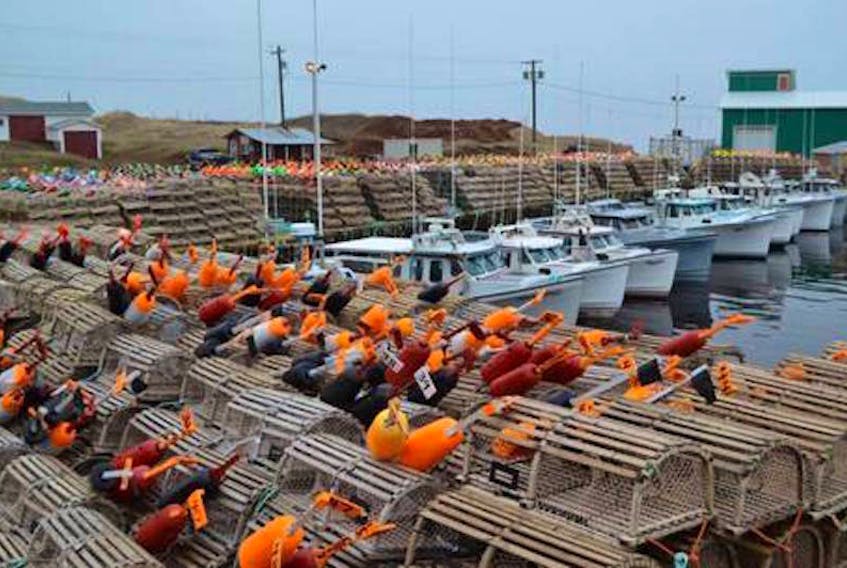FOREWARD: The spring fishers of P.E.I. include over 1,000 fleets from Tignish to East Point to Victoria. We are grateful for the support of local businesses and the general public who purchase our cold-water lobster each year. As with all goods and services, prices of lobster also fluctuate. However, one thing remains constant: Spring-caught lobster are hands-down the best quality lobster in North America, and when it comes to annual prices, the bar should be set by the highest quality product. We acknowledge that several factors also affect the price of lobster, such as CAD value, supply and demand. Our two articles are meant to provide clarity on the varying costs of P.E.I. lobster. Following is Part 1.
BY JOHN MACPHEE
TOMMY DRAKE
AND JEREMY CHAISSON
GUEST OPINION
There appears to be a bit of confusion in the public and media about the apparent low prices paid for fall lobster. In fact, in an article last year a fall fisherman insisted that buyers were, “robbing Peter to pay Paul.”
If spring and fall lobsters were the exact same product, then by all rights and logic they should be getting the same price per pound. This is not the case.
Spring lobsters are a superior product to fall lobsters. All lobster fishermen know this, as do the processors. For those who do not, let’s break it down into facts.
We can all agree that the Atlantic lobster fishery is one of the most important iconic seafood exports of Canada and is worth more than $1 billion annually (DFO, 2014) with sustained increases in market demands. It is fished across 40 managed lobster fishing areas (LFAs) in the Atlantic provinces and Québec – P.E.I. contributes to almost 30 per cent of the total exported product.
There is not just one single lobster fishery on P.E.I. – there is a fall fishery and a spring fishery, and the two are not just different in the time of year they fish, but also in the lobsters they are catching.
Lobsters caught in the spring fishery (from May to June), are known in the industry as hard-shell lobsters. In contrast, lobsters caught in the fall fishery (from August to October) are referred to colloquially as soft-shell lobsters, or shedders.
This is for a good reason – these different versions of the same species, Homarus americanus (American lobster), are at different stages in their life cycle because of the seasonal nature of the two fisheries. The spring lobsters have a well-developed hard shell while the fall lobsters have just recently molted and their shells are brand new and quite soft, and their weight is made up of a lot of water. Furthermore, freshly-molted soft-shell lobsters are weakened and are much more susceptible to disease and stress until their shell regains strength over the winter.
Why does the molting process reduce the quality of lobster? While they molt, a new, soft shell is formed, and lobsters actively take in water to expand and stretch this soft exoskeleton. Therefore, recently molted lobsters have reduced meat yield and excess water content, which is obviously undesirable both to consumers and processors. Soft-shelled lobsters also have poorer survivability during handling and transportation, which have negative economic consequences to the lobster industry, as well as affecting consumer confidence.
In the days to weeks following molting, excess water is replaced with new tissue growth and re-mineralization of the newly formed shell, producing harder shells.
Why is there lower meat yield in soft-shelled lobsters? In addition to taking on water, the claw meat actually shrinks so that they can fit through the small knuckles. Shrinkage can reach or exceed 60 per cent. In the months following molting, the claw muscles will regain their mass and actually grow a little bigger. A marketable lobster can grow around 10 mm in carapace length and approximately 40 per cent in weight after each moult (depending on age and sex). But until that time, “freshly molted” soft-shell fall lobsters do not have the same meat yield as hard-shell spring lobsters.
Environmental and ecosystem-related factors such as water temperature and diet can affect the molt timing and influence shell hardness and product quality. Lobster molting occurs most frequently in the summer months, with evidence to suggest that there are some regional differences. For example, scientists have shown that most lobsters molted between early July and early September in the southern Gulf of St. Lawrence, while another suggested that the majority of lobsters molted during the period from August to October in the Bay of Fundy.
All of the available data shows that the prevalence of soft-shelled lobsters is low from the beginning of the year through May or June, making the lobster caught during this time the best quality, hands-down.
(In Part 2 tomorrow, fluctuating prices for spring and fall lobster are examined)
John MacPhee, Tommy Drake and Jeremy Chaisson are members of Informed P.E.I. Fishers









